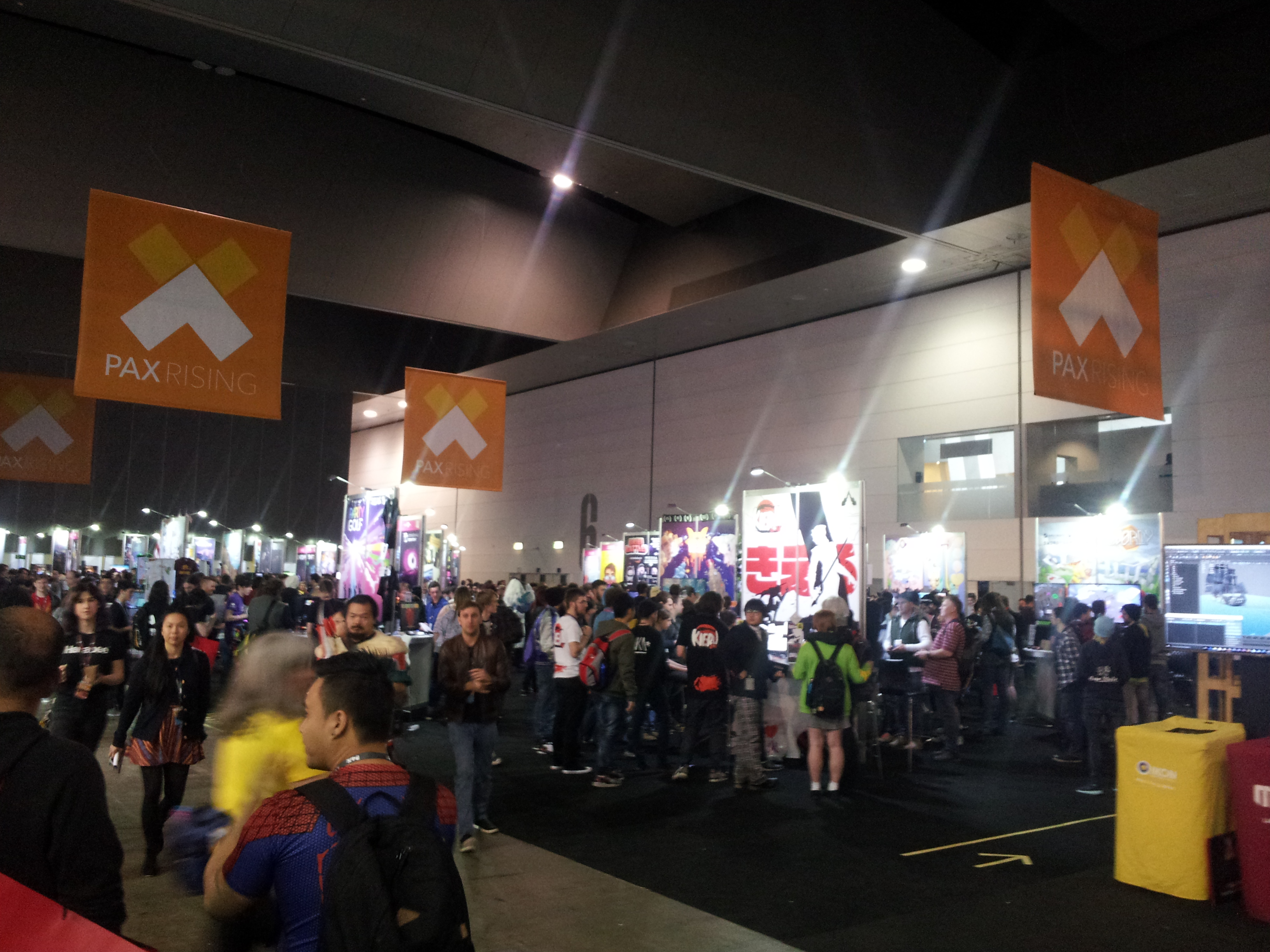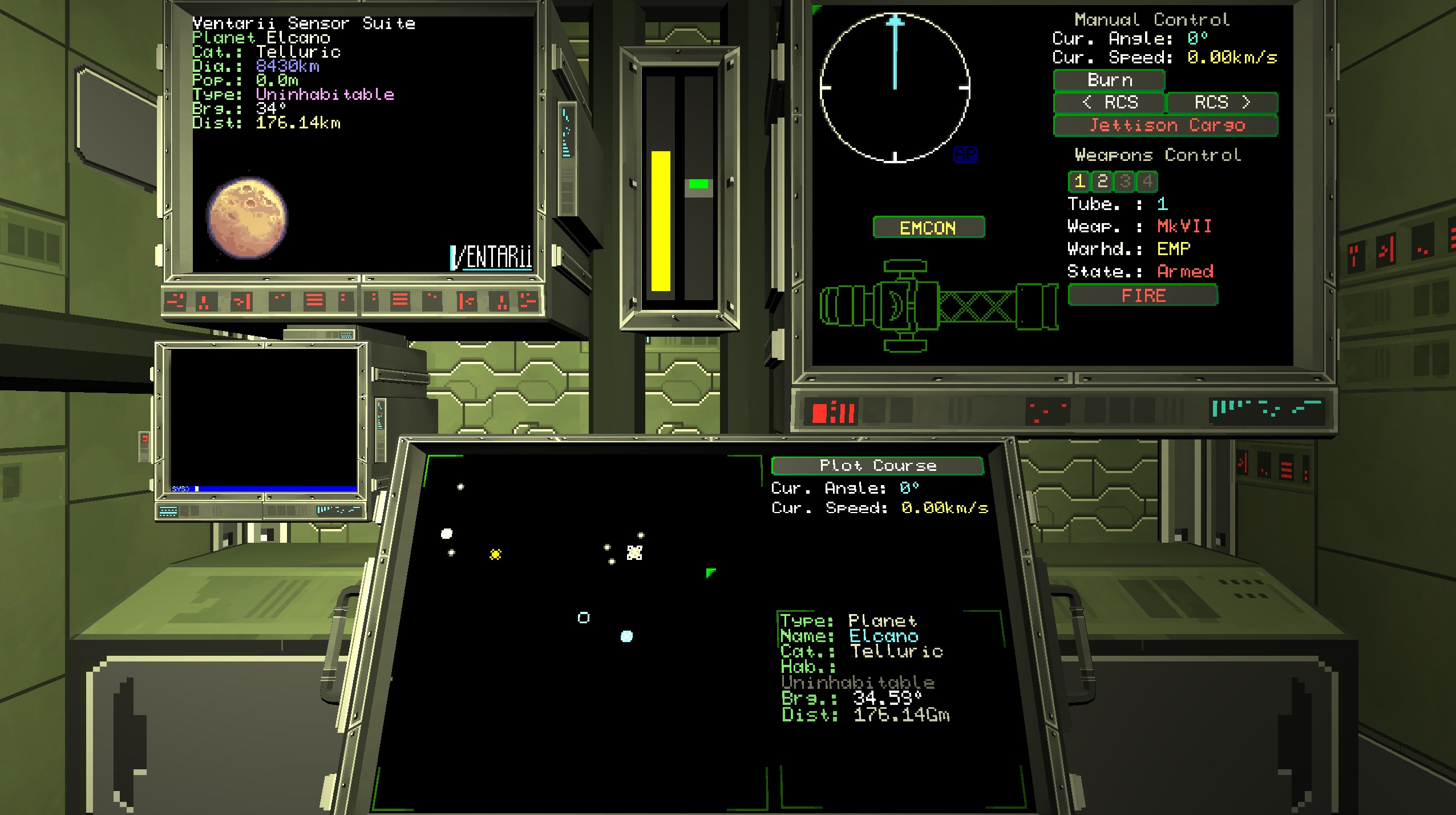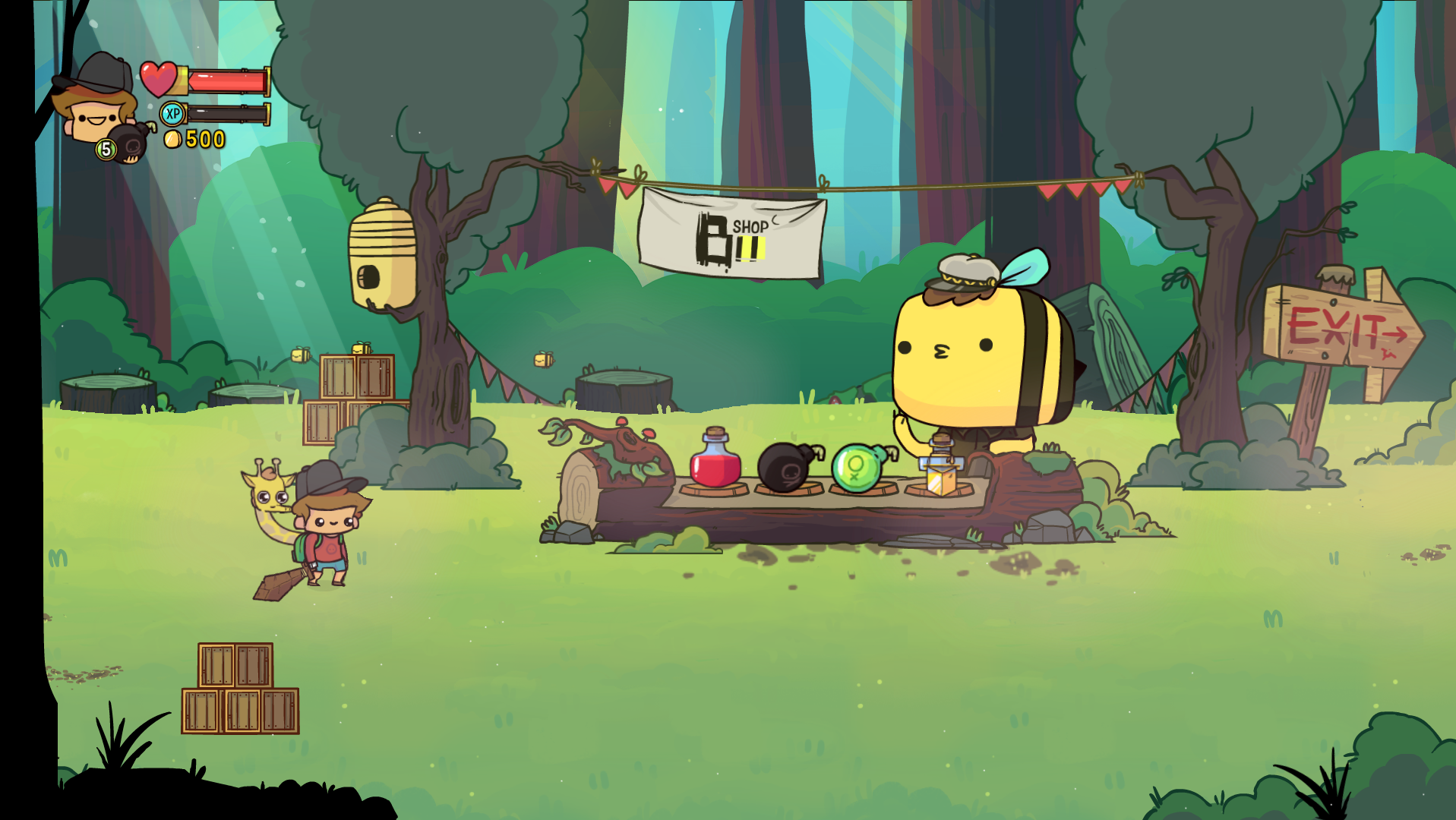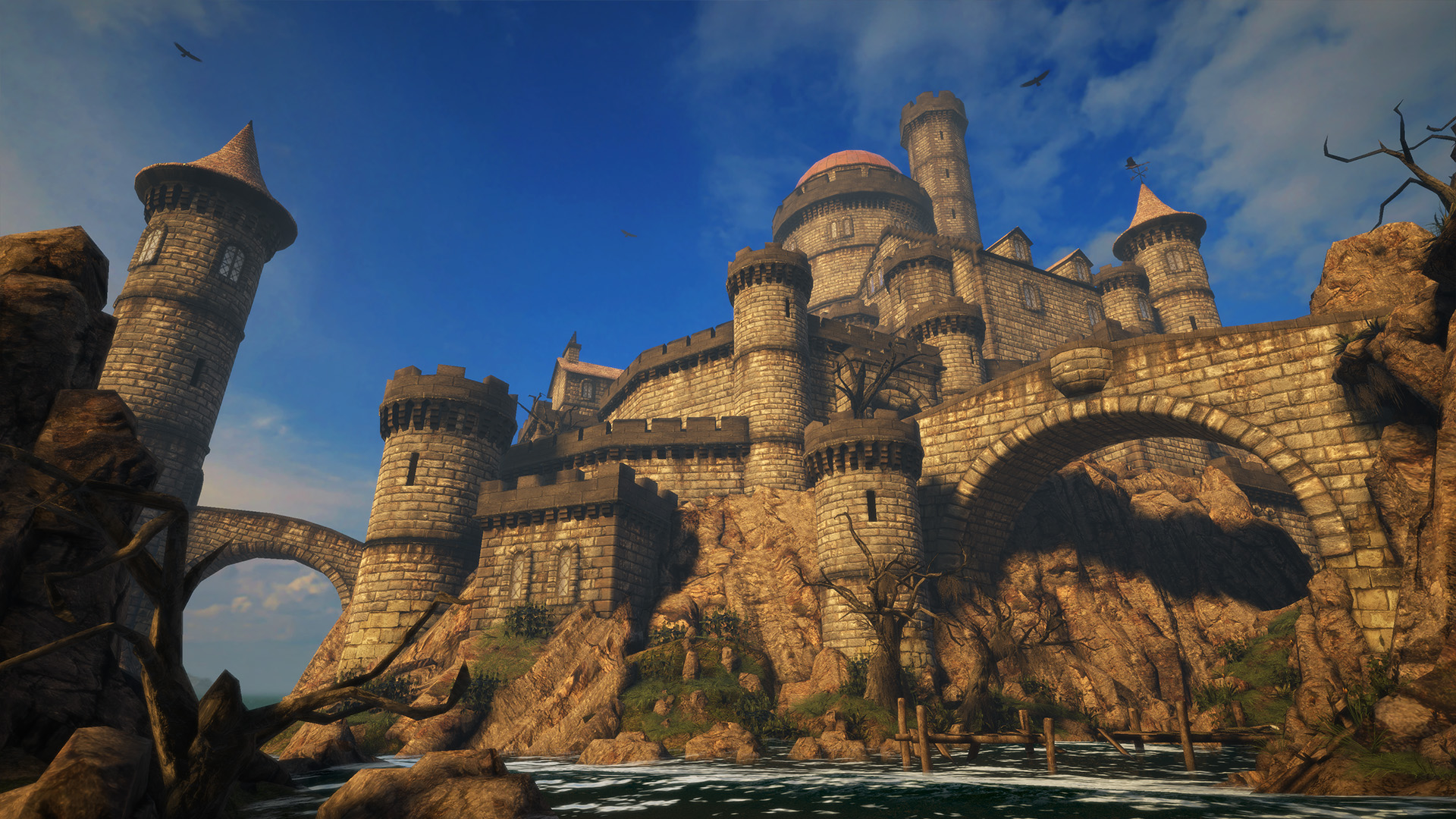Indie Games Showcase - PAX Australia 2016
We hand-pick twelve up and coming games from the show

“Oh dear.” It wasn’t exactly an involuntary vocalization, but it was certainly appropriate. I did feel a little silly saying it to nobody in particular, though. It’s one thing to look down at your PAX guidebook and notice that the indie pavilion has spread to occupy an ever-more intimidating portion of the expo hall floor, but it’s another thing entirely to behold it on a Friday morning; an uncountable number of stands and booths vying for attention, many still making last-minute additions out of bits of twine and driftwood, their exhibitors eyeing passers-by nervously as demo builds threw unexpected tantrums. How could one person possibly cover all of these? Three days just doesn’t sound like enough anymore.
Fortunately, as it happened, PAX had already gone some of the way to help me with my dilemma. Lined up along the back wall, bathed in light, were six games of particular note; games selected by industry veterans unknown that, I quote “highlight the best of the Australian and New Zealand indie scene”. Together, they were the Australian Indie Showcase; the proverbial stars of the show. If there was any place for me to begin, it was here. Only the best for you, eh reader? Let’s have a close look at PAX’s finest indie games.
Objects in Space by Flat Earth Games

Even if you’re not on the lookout for it, it’s hard to miss Objects in Space among the plethora of clone-stamped indie pavilion booths: it’s the one that screams “get on our level, Steel Battalion” with every inch of its mad, matte-black, garage-crafted control panel. Where most space simulators tend to abstract you away from the hundred or so systems keeping you alive and moving in the inky black void, Objects in Space seeks to immerse you in the nitty gritty details, first and foremost by literally putting you in front of a control panel with more buttons and status lights than a nuclear power station.
There’s a certain childlike satisfaction in being able to physically flip the safety cap and depress a big red button to fire the missiles, but beneath the novelty of Objects in Space there’s a very real sense of hardcore simulation at play; you aren’t so much flying a ship as you are trapped in a tin can full of expensive circuit boards, staring out the solitary tiny window at the boundless void, your pasty face lit up by the radioactive glow of half a dozen chunky information terminals. During the demo I accidentally turned my ship around while exchanging missile volleys with a feisty space pirate, and his missiles vanished off the radar: I only had sensors on the front of my ship. I was blind. Blind, and terrified, and totally unprepared for the EMP when it finally rocked my hull. Thankfully, the pirate’s gently cooling wreckage was already peacefully spreading across the quadrant by that point, so I had time to survey my status lights, take a trip down to engineering, unscrew a circuit board panel, and see if I couldn’t get the reactor purring again. I was no longer in the red, but if I wanted to survive my next battle, I’d have to get really good at parsing the information screens for the telltale energy signature of an enemy’s thrusters. ‘Hardcore’ is an understatement.
The somewhat ironically-named Flat Earth Games have released blueprints to their peripheral and encourage people to build their own—so there, it’s not just a party trick to attract people on the expo hall floor—but to the relief of those of you who can’t solder two wires together without producing a mountain of melted slag, you can play the game just fine with the keyboard and mouse. It’s expected to release before the end of 2016, so start collecting those electronic knick-knacks.
Wildfire by Sneaky Bastards

Most stealth games tend to lend themselves well to creeping around in the dark, slitting throats and rifling around in other people’s underwear drawers. Wildfire is more like the stealth equivalent of being trapped in a Rube Goldberg machine gone awry; mechanisms unfurling and interacting in unexpected, chaotic, often deadly ways; set in motion by you, and often biting you in the backside in return. You are a person who gets not quite burned at the stake and subsequently gains the power to sling the elements around like a child with handfuls of soggy toilet paper: water, earth, and of course, fire. Why exactly you need to embark on a quest of vengeance at this point is beyond me, but hey, it’s an excuse to light some soldiers’ pantaloons on fire.
Though short, the demo gave a tantalizing glimpse of the kind of creative problem solving that’s ostensibly at Wildfire’s core. Elements react with each other and their environment in all sorts of useful ways, so it’s up to you to utilise them to tickle the game’s systemic bits and manipulate the situation to your will. Fire burns vegetation, water heals burns, smoke suffocates people, vines trap people, fire makes bobcats blindly back up no matter how many deep pits full of spikes might be behind them, and so forth. It’s all very efficiently, clearly communicated; cascading states compressed into an unassuming little side-scroller. While it’s very possible to carefully orchestrate those states, the most amusing moments of the demo for me were those that were entirely unexpected; accidentally smothering a man by throwing a fireball into a nearby heap of fresh snow, or leaping onto a seemingly-sturdy bridge and smashing straight through to the ground below. I’m no Master Thief, alright?
Exactly how far Dan Hindes, the lead designer and well-known stealth connoisseur, intends to take Wildfire’s concept is as much a mystery to me as it is to you—such is the consequence of playing a demo that consists almost entirely of the tutorial—but it’s flexible enough to go anywhere from tight, subtly-crafted interlocking puzzle levels all the way up to complete and utter pandemonium. Either way, it’s a clever little take on systemic stealth where unbounded chaos is as dangerous to you as it is to everyone else, and I’m looking forward to its full release when 2017 finally rolls around.
Mini Metro by Dinosaur Polo Club

For every person who has ever silently fumed in their cramped, suffocating cubic foot of standing room on an overloaded subway car, here is a chance for you to momentarily sympathize with the poor bureaucratic souls who had to organize it in the first place. You are a railway network planner in a city where new stations just drop fully-formed out of the sky every few days, and you must continuously expand, tweak and prune your collection of subway lines to meet with the constantly mounting demands of the population. Leave too many people waiting at a station too long, and boom, it’s over. No replacement bus services here, darling.
It sounds, admittedly, like the driest variety of urban planning simulator, but there’s something immediately very engaging about Mini Metro. Perhaps it’s the way it gently applies pressure in waves, leaving you just enough time to appreciate your creation running smoothly before putting you between a rock and a hard place, or perhaps it’s its startling minimalism. No spreadsheets, money or expenditure sliders here, only a handful of simple resources and the primitive shapes of a subway map with all the labels sandblasted off. It’s almost intuitive enough to work entirely tutorial-free. Almost. I wish somebody had told me you could reroute tracks once they were laid down, though.
There are a handful of extra modes thrown into the game, such as being handed an existing quote real life unquote subway map and trying to expand on it sensibly, but frankly the core experience seems to stand just fine by itself. Working out whether you enjoy quietly panicking at brightly-coloured squares slowly moving around will be key, but the good news is that there’s no need to agonise over it for months: the game’s been out on Steam for over a year, and is available on a plethora of mobile platforms too.
Paradigm by Jacob Janerka

Life in the niche of the point-and-click adventure game is tough, and standing out is tougher still. Paradigm, however, seems to have a pretty good idea of how to achieve that: by being distinctly discomforting, legitimately laugh-out-loud funny, and often just plain weird. You are the titular Paradigm, the gross mutant result of what happens when a company dedicated to genetically engineering perfect prodigy children mixes up their peptides with their Pepsi, and you must… well, get on with day to day life, for starters. That seems difficult enough when you have a head like a rare tropical fungus and you live in the 1980s Soviet Union by way of a surreal fever dream. There’s some kind of sinister plot forthcoming to worry about, but first things first, eh?
While the vertical slice I got to experience of Paradigm was small, it pretty clearly communicated the LucasArts-style design philosophy that Jacob Janerka has been aiming for: fun writing, oodles of imagination, minimal frustration, and very few chances to kill yourself by walking off a five pixels wide ledge. After experiencing the “live-action dog tutorial” (trust me, it’s worth it) I proceeded to plug in a dating AI and get it warmed up with a sex-ed vinyl record, after which it finally agreed to Google my computer woes for me. While being confined to one room did make the puzzles seem a little too straightforward—thing is missing component, find component; character wants music, search through box of music—the offbeat flavour text and dialogue trees were a pleasure to dig through. Shame the voice acting rubbed me the wrong way, but maybe I just need to adjust to Paradigm’s somewhat naive Eastern European cadence. Also there was a sloth regurgitating a candy bar for some reason, which is… a plus?
The fortunate thing about point-and-click adventure games, though, is that you can more or less guarantee that they’ll behave the same way the whole way through: talk to characters, click on surroundings, and rub things together until the path to progress beckons. Thus, even with just a short look, I feel confident in saying that if Paradigm can keep up the same level of creativity for an entire game—and avoid bloody stupid gimcrackery, of course—it’s well on its way to success. If all goes according to plan, you should be hearing about it again in January 2017.
The Adventure Pals by Massive Monster

“If we can let The Legend of Zelda get away with the premise of ‘small child goes on epic quest to save world from violent megalomaniac’ in 2016, then we can sure as hell let this get away with it”, I said to myself, looking upon the saccharine rainbow-spouting spectacle of The Adventure Pals. A side-scrolling platformer/brawler/thing with a serving of RPG on the side, The Adventure Pals seems primarily designed to recall times of exploring the great outdoors as a kid while being cheekily irreverent with as many grand adventure tropes as possible. Your grandfather’s been kidnapped! Oh no! And he’s going to be turned into hot dogs! How shocking! Take up your wooden sword, mount your pet giraffe, and venture forth, brave child! Alright, so the game’s sensibilities aren’t for everyone; they’re born out of the kind of sugary, fluffy ‘so random’ mentality that’ll just as quickly jangle its keys in your face as tell an actual joke, but it’s nice to be spoon-fed some light-heartedness once in a while.
A stranger and I both reached for the controllers simultaneously, putting the game’s optional co-op to the test: could it foster friendship between two people who have never met and have no means of communicating other than vague gestures and nervous laughter? The answer is a resounding “yeah, sure”. Despite the art style the game feels distinctly like one of the more solid 16-bit platformers that eschewed the ‘just keep moving right’ mentality; explore, beat up dudes, find secrets, collect coins, get to the exit, all with the knowledge that you can let your little brother drop in at any time. The combat didn’t feel particularly nuanced—keep hammering attack until everything in front of you dies or you’re forced to dodge—but we were, after all, in the first level of the game, and the ability to toss bombs around certainly livened things up a fair bit. Perhaps The Adventure Pals is squaring up to be a Battleblock Theatre-like of sorts; a kooky side-scroller where betraying and abusing your pals is every bit as fun as cooperating with them. We’ll just have to see, I suppose. Bring on 2017.
The Eyes of Ara by 100 Stones Interactive

Without the novelty factor of full-motion video I think we can agree that Myst was little more than the blood-flecked choking coughs of the PC adventure game breathing its last, but it did have the redeeming quality of letting you poke at opaque, mysterious, obtuse mechanisms made for unknown purposes, an experience that I’ve had a soft spot for ever since getting lost in the local Harvey Norman as a child. The Eyes of Ara, a Myst-like in all but name, leads off on the right foot by punting you head-first into a mysterious castle, with promises of mad science and spooky radio signals aplenty. Nobody’s seen the eccentric owner in years, and when even the front door requires you to recover and reassemble two halves of a cog, it becomes apparent that finding him is going to be no mean feat.
And so I prodded my way through the demo, toying with trinkets and machines until they bared their secrets. The controls are simple and accessible; the mouse is your hand, and it’s your job to use your hand intelligently. Can I press these buttons? Can I swipe this from side to side? What moves, and how does it move? The game doesn’t abstract you away from such questions, but makes them problems in themselves. While the environments felt a great deal less interactive than one would expect—the vast majority of the lovingly-rendered clutter is merely so much set dressing—they did make it a lot easier to home in on relevant clues and items than if I’d been permitted to flip through every last book on the table. The demo culminated with me placing four ornate knives into four sheaths hidden around the room, which released the safety cap on a big red button on a podium, which in turn caused an enormous staircase to slowly rotate into place, granting exit. It made absolutely no sense, and yet in its own strange way, felt completely intuitive.
The world needs more games about exploring spooky castles full of secrets built by madmen, and the good thing about The Eyes of Ara—as far as I’m concerned—is that not only does it seem to fully satisfy those criteria, but has done for quite some time; it’s been out on Steam since July, and I suspect the demo available on its page is very much the same experience as the one I had. Go see if it’s your kind of thing.
 Comments
Comments









